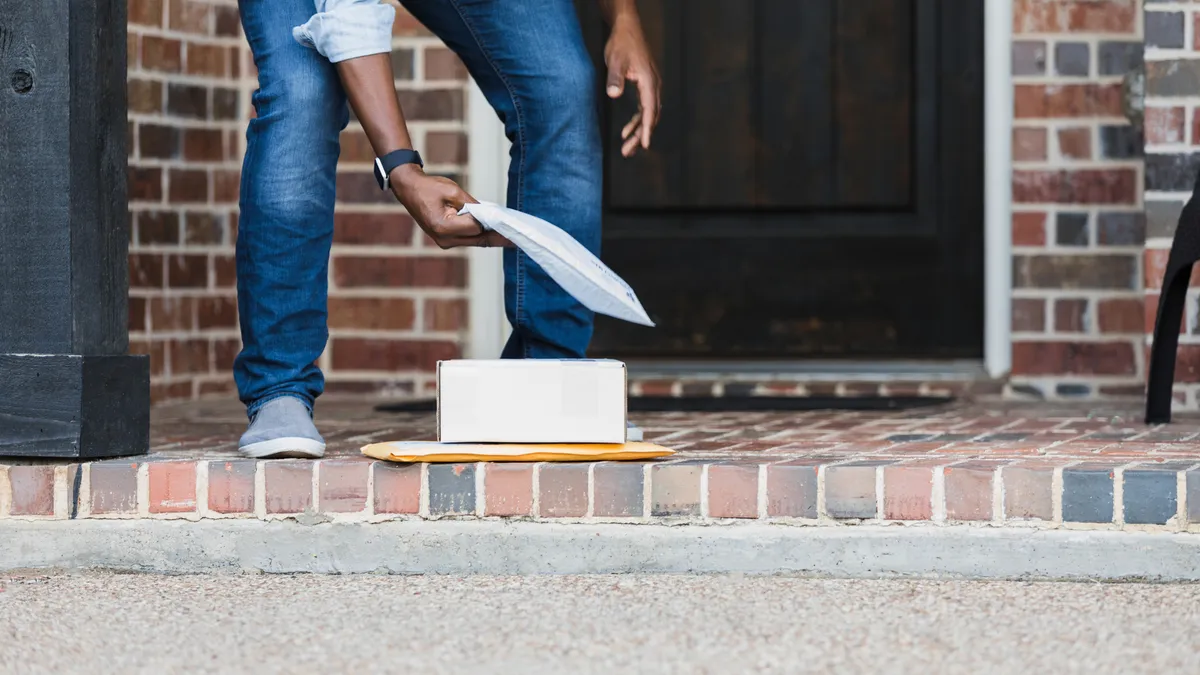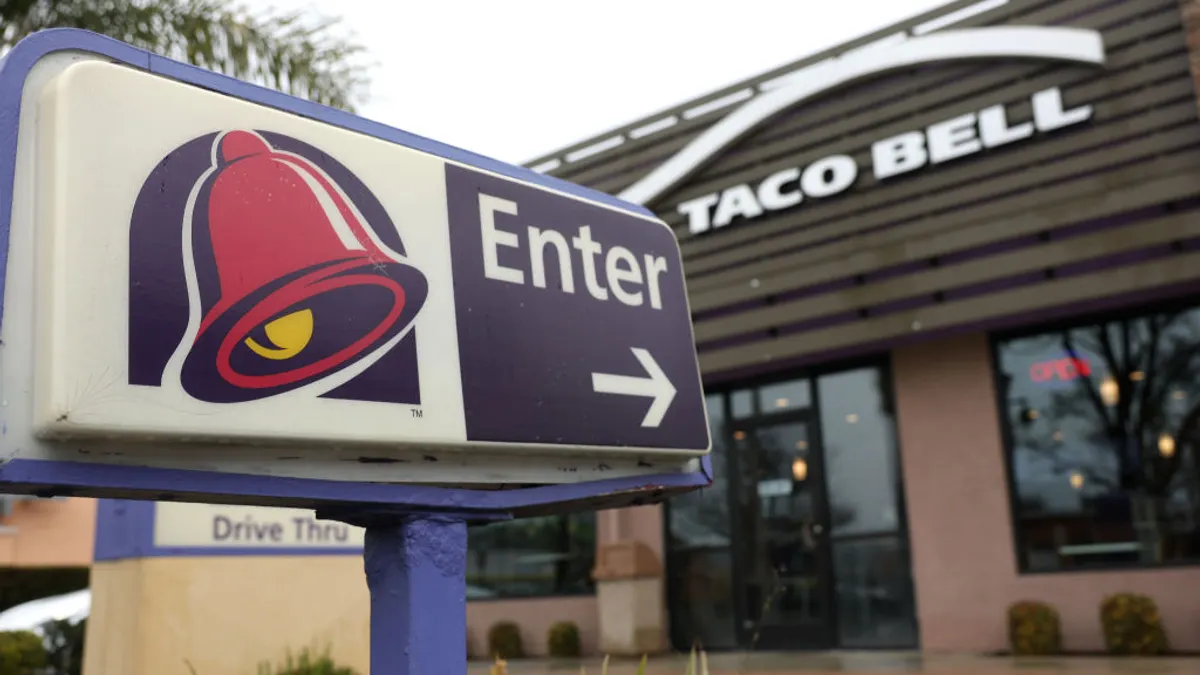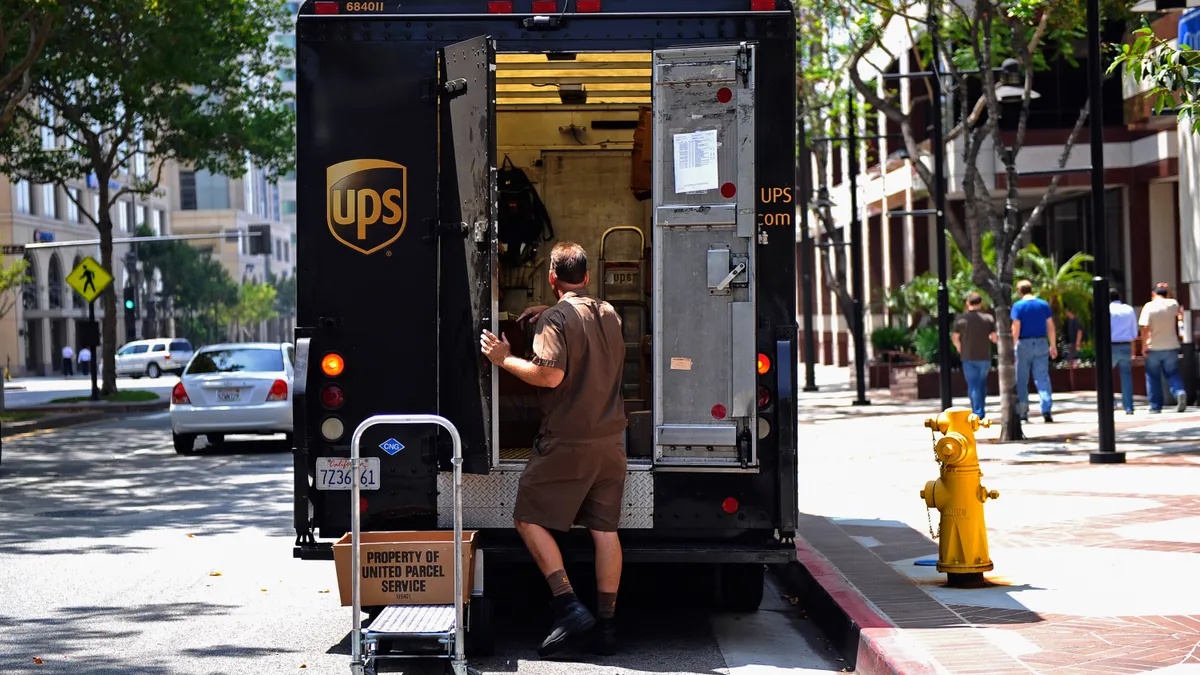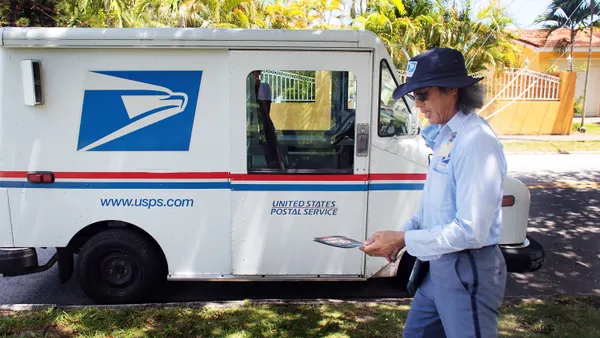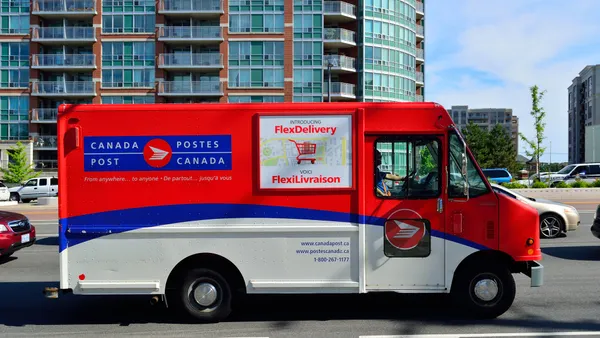Dive Brief:
- Data sharing among retailers, delivery providers and law enforcement could help efforts to curb package theft, the U.S. Postal Service's Office of Inspector General said in a May 15 report.
- Currently, broad crime classifications, consumer uncertainty in reporting and retailers' attempts to protect proprietary data are complicating efforts to understand the issue's scale, the report said. In accompanying comments, Postal Service management agreed that more interaction is needed among affected parties.
- "As ecommerce grows and delivery volumes surge, last-mile theft has become a concern for a broader range of stakeholders, including consumers, retailers, and private delivery companies," agency management said. "Our response must reflect this complexity. We are pursuing enhanced partnerships and exploring models of cooperation, where cross-sector coordination has improved outcomes."
Dive Insight:
Comprehensive package theft data is currently limited, and surveys examining the issue vary in their findings, the OIG's report noted. Security.org estimates at least 58 million packages valued at $12 billion were stolen in the U.S. last year, while SafeWise determined over 120 million packages valued at $16 billion were taken in 2023.
"The absence of an industry-wide reporting system makes it difficult to aggregate and analyze theft data comprehensively," the report said.
Retailers typically bear the cost of replacing stolen items or issuing refunds, and post-delivery theft is often difficult for them to investigate and address cost-effectively. Theft-related complaints also can tie up customer service teams' resources and erode trust in affected retailers, per the report.
Consumers and retailers aren't the only ones impacted by package theft. The issue could reduce delivery providers' revenue by spurring customers to shop in-store and damaging their reputations. An unnamed national retailer told the OIG that it has "pulled business completely away from delivery providers because the lost package claims have gone through the roof, and we can't afford to do business in their network.”
While authoritative data on porch piracy remains limited, shippers and carriers have ways to reduce the risk, the report said. One way is to leverage secure delivery options, like parcel lockers or pickups at physical retail locations, particularly in high-risk areas.
However, some retailers fret about maintaining customer convenience, telling the OIG that they'd rather replace a stolen order than push recipients to pick up their packages from an alternate location. Flexible shipping methods could limit the hassle.
"For example, some retailers allow consumers to consolidate deliveries and schedule them to arrive when someone will be at home," the report said. "Alternatively, they can arrange for a trusted neighbor to pick up packages and hold them or choose to have their packages delivered to their workplace."
Another method to curb package theft is to lean on enhanced tracking technology. This could limit the time a package is outside and exposed to potential theft by informing the customer precisely when the delivery will arrive, per the report.
The report also recommended the use of discreet packaging and parcel placement. Shippers can use packaging without branding prominently displayed, while carriers can train delivery personnel to place packages in out-of-sight locations.



